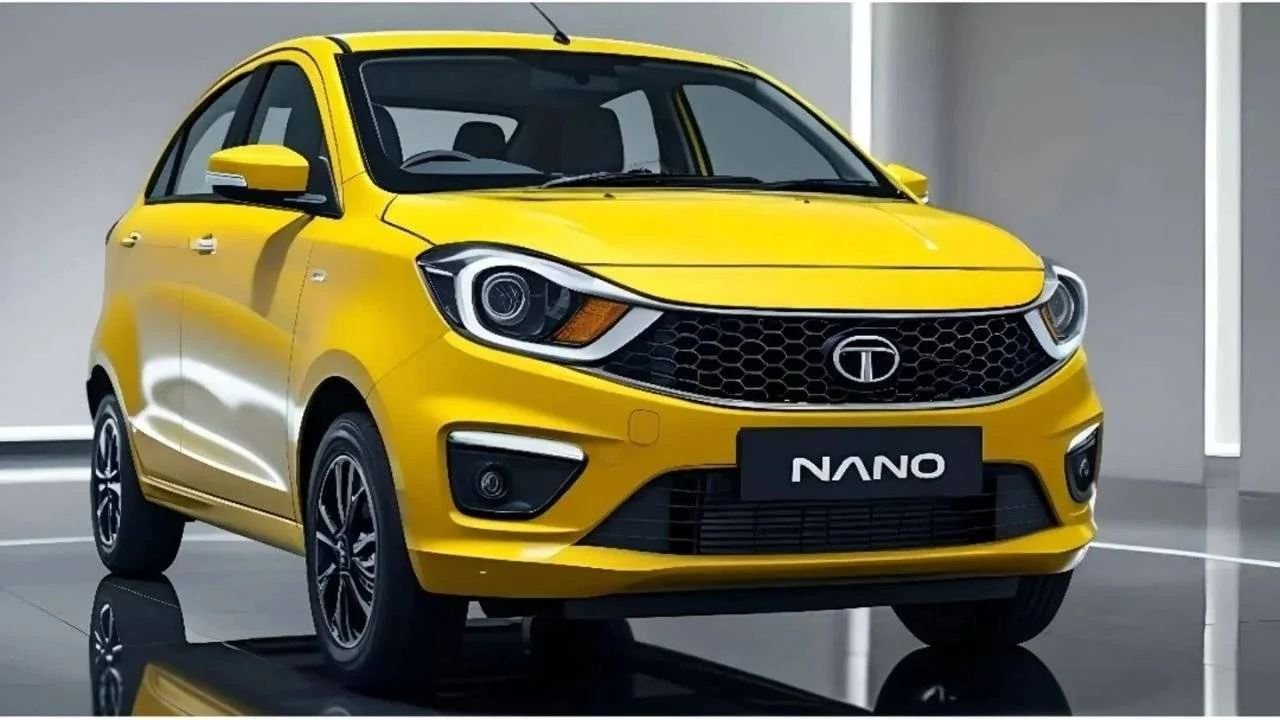In the vast and evolving Indian automobile landscape, the New Tata Nano has carved its place as a symbol of innovation, affordability, and inclusivity. Touted as the “People’s Car,” the New Tata Nano was not just an automobile—it was a movement. Designed for the aspirations of India’s emerging middle class, this compact hatchback offered practicality, safety, and comfort, all within a tight budget. It stood as a ray of hope for families dreaming of four-wheeler ownership without breaking the bank.
Despite a mixed market journey, the New Tata Nano remains one of the most iconic projects in India’s automotive history. Let’s take a deep dive into why this little wonder made such a lasting impact.
Why the New Tata Nano Was Revolutionary
Before the New Tata Nano’s launch in 2008, the dream of owning a car seemed out of reach for many lower and middle-income Indian families. Tata Motors transformed this narrative by launching a compact, fuel-efficient, four-seater hatchback priced at just around ₹1 lakh.
This bold step wasn’t just about affordability—it was about empowering families with safer mobility. Riding a two-wheeler with kids was always risky. The New Tata Nano provided a far more secure and comfortable alternative at a price point no one thought possible.
Key Highlights of the New Tata Nano
| Feature | Specification |
|---|---|
| Manufacturer | Tata Motors |
| Launch Year | 2008 |
| Starting Price | ₹1 lakh approx. |
| Engine | 624cc, 2-cylinder petrol engine |
| Mileage | 20-25 kmpl |
| Seating | 4 passengers |
| Safety Rating | Basic to improved (in later models) |
| Top Speed | ~100 km/h |
What made it truly unique was the balance it struck—offering essentials without any extravagance. That meant fewer frills but more value.
Engineering Brilliance at Its Core
The New Tata Nano was a textbook case of frugal engineering. To keep the cost low without compromising function, Tata Motors adopted several smart strategies:
- Lightweight materials
- Compact dimensions
- A rear-mounted engine (a rarity in hatchbacks)
- Minimal electronics
The rear-engine setup wasn’t just space-efficient but also contributed to better weight distribution and a tighter turning radius. In cities like Mumbai, Delhi, and Bengaluru where traffic congestion and tight parking are everyday realities, the New Tata Nano was a blessing.
Also Read – New Hero Splendor 125 – 90 kmpl Mileage, Smart Features & Affordable Price: India’s Commuter King Reimagined
Performance and Fuel Economy: Built for Daily India
The car was never built for speed but rather for efficient urban commuting. Its 624cc engine produced modest power but delivered an impressive mileage of 20–25 km/l, making it one of the most fuel-efficient petrol cars in the market at the time.
Handling city traffic was a breeze, thanks to its compact build, high visibility, and light steering. The New Tata Nano performed reliably across pothole-ridden roads and uneven lanes. Its ride quality, while basic, was sufficient for daily travel.
Interior Comfort and User-Friendly Features
The early models of the New Tata Nano were very minimalistic—no power steering, no airbags, no power windows. But as Tata responded to consumer feedback, higher trims began offering:
- Air Conditioning (a major upgrade)
- Power windows
- Central locking
- Integrated music systems
The car’s upright design offered excellent legroom and headroom for four adults. Storage solutions like glove boxes and boot space were thoughtfully integrated for urban family use.
Safety Considerations and Build Improvements
Initial concerns about safety, especially incidents involving engine fires, hurt the brand’s image. Tata Motors took this seriously, redesigning parts of the car and strengthening safety protocols. Reinforced wiring, improved fire resistance, and stronger build quality followed in later versions.
Though it did not offer premium safety features like ABS or airbags, the New Tata Nano met all regulatory safety norms of the time. As a city car, its safety was adequate for its size and purpose, but customer perception proved harder to change.
Public Perception: The Double-Edged Sword
Ironically, the very factor that made the New Tata Nano revolutionary—its ultra-low price—also hurt its image. Being known as the “cheapest car in the world” didn’t appeal to a status-conscious middle class. While people appreciated its innovation, many were hesitant to be associated with it.
Attempts to rebrand and upscale it as a trendy city car didn’t quite shift the perception. Despite clever marketing and upgrades, the tag of “cheap” proved difficult to shake off.
The End of the Road: When and Why Production Stopped
After years of fluctuating demand and increasing production costs, Tata Motors decided to stop production of the New Tata Nano in 2018. Despite a roaring start with millions of inquiries and bookings, the long-term consumer sentiment just didn’t sustain.
However, this doesn’t take away from the boldness of the project. It remains a case study in automotive engineering and market positioning, taught in business schools across the world.
FAQs About the New Tata Nano
Q1: Was the New Tata Nano safe to drive?
A: Yes. Later models met Indian safety norms, though they didn’t offer high-end features like airbags.
Q2: What was its mileage?
A: Around 20 to 25 kmpl depending on driving conditions.
Q3: Why did it fail commercially?
A: A mix of public perception, rising costs, and increasing competition led to its decline.
Q4: Will Tata relaunch the Nano as an EV?
A: There are speculations, especially given Tata’s EV push, but no official confirmation yet.
Q5: Could it seat four adults comfortably?
A: Yes. Despite its small size, it was surprisingly spacious inside.
New Tata Nano in the Modern Context: A Comeback as EV?
With Tata Motors leading India’s electric revolution, there are rising whispers about the New Tata Nano being revived as an electric vehicle. A small, affordable, city-friendly EV could fill a crucial gap in the market.
An electric New Tata Nano with 100-150 km range, compact size, and government EV subsidies could create massive demand among urban dwellers, students, and low-income families.
If reimagined as a futuristic compact EV with smart features and 5-star safety, the New Tata Nano could very well return—this time as an environmentally friendly game-changer.
Conclusion: A Dream That Inspired Millions
The New Tata Nano was not just a car—it was a symbol of ambition, affordability, and mobility. It brought the dream of car ownership closer to millions and sparked discussions about sustainable urban mobility years ahead of its time.
While its commercial success may have fallen short, the emotional and social impact of the New Tata Nano remains unmatched. It opened a path for budget cars and made every Indian believe that owning a four-wheeler was not just a luxury, but a possibility.
As India moves towards electrification and cleaner transportation, the spirit of the New Tata Nano lives on—ready to inspire the next generation of innovations.
Some Important Link
| Download News APP | Click Here |
| WhatsApp Group | Click Here |
| Home Page | Click Here |





